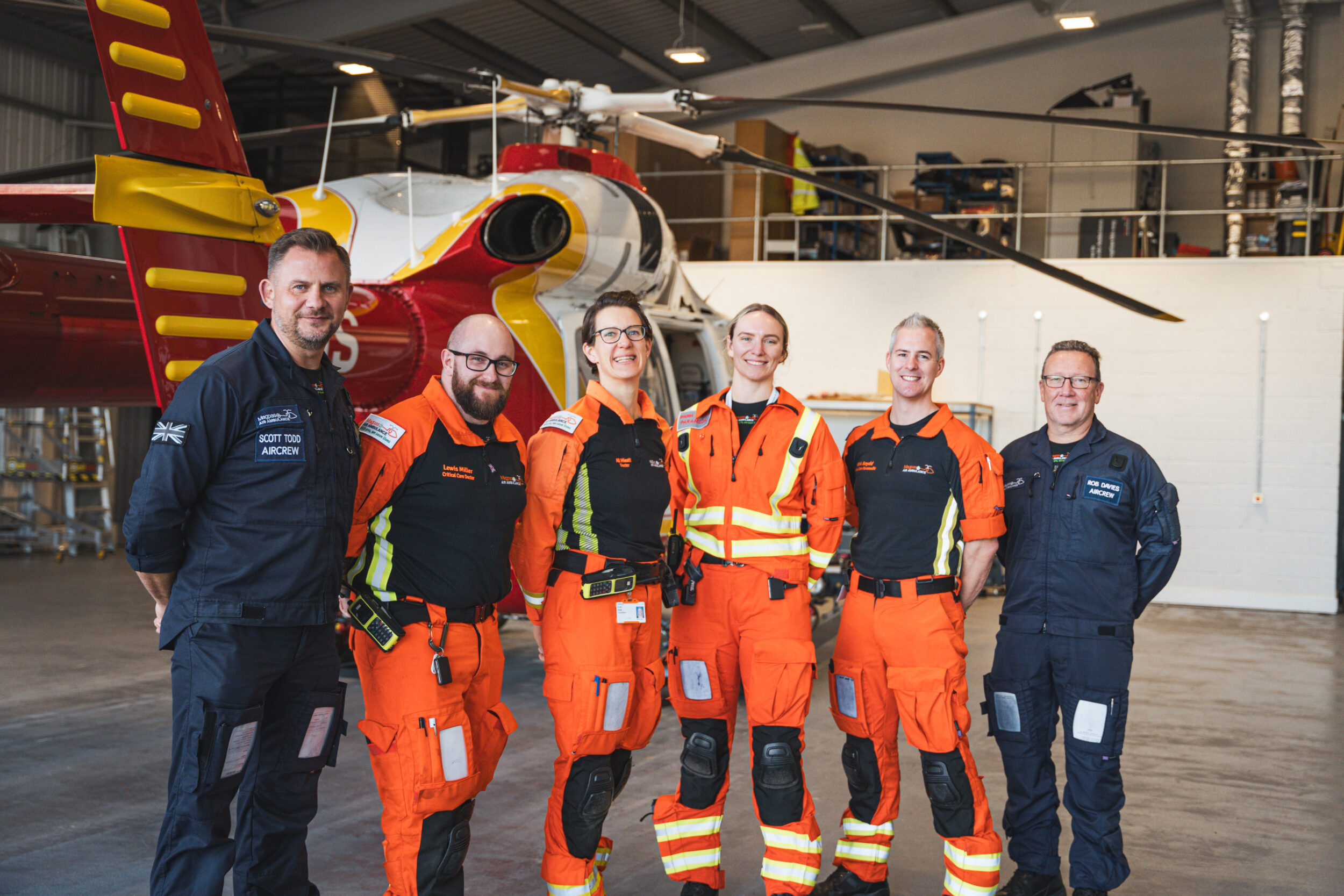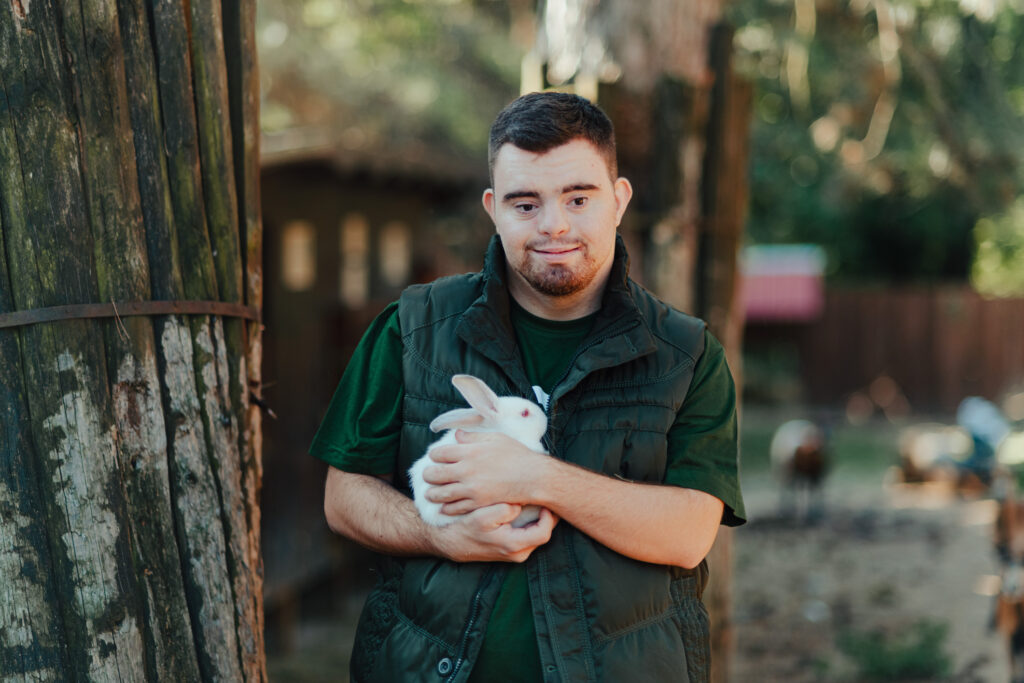
Saving lives and £100k per annum though development finance
When Magpas Air Ambulance’s existing site was earmarked for housing, the charity decided it was time to take the next step – creating its own purpose-built airbase. £2.5m of the £7m project cost is being covered by a Charity Bank development loan.
As well as the development loan, Charity Bank facilitated a £1.4m loan from the Resilience & Recovery Loan Fund. Together, the loans are enabling Magpas to relocate its airbase, offices and training facilities. The charity should move into its new home in June 2023.
Here, Magpas’ CEO, Daryl Brown MBE, explains the reasons behind the move, and why he felt seeking development finance was such a good option for the charity.
Why did you decide to move rather than lease a different site?
We looked at rented facilities, leased facilities and gifted facilities, but to get the best facility for our crew and patients, it had to be a bespoke build. We need to protect the space around the building to ensure there are no obstacles to taking off and landing safely. We also wanted to bring our headquarters, clinical training facilities and airbase together, and we wanted to move closer to our main demographic and have better road links to reduce the time it takes us to reach patients.
Plus, it’s the 50th anniversary of Magpas Air Ambulance. And owning this property helps us to guarantee the next five decades for the charity.
In what way?
The property is an asset, of course, but it also means that we have long-term security. There’s no danger of being told that the landlord’s plans have changed and we need to move. We also own the land around the building so can be assured that it won’t be developed.
How will the new building affect your operating costs?
Altogether, we’ll save around £100,000 an annum when you factor in running costs, rent and so on.
The current Magpas Air Ambulance base is a very old building—parts date back to WWII. So, it’s not the most environmentally sound or economical to run. With the new facility, we’re able to focus on environmental sustainability and keeping overheads as low as possible.
Plus, by bringing everything together at one location, we’ll no longer need to run two sites, pay two sets of business rates, broadband costs and so on, or pay for the costs of staff moving between the sites.

What other benefits will the new development bring?
It’s the perfect location. It’s on the outskirts of what is set to be the biggest enterprise zone in the United Kingdom. We’ll be able to engage with those businesses, but we’ll still be close enough to the communities of Cambridgeshire and Bedfordshire, which have supported us for 50 years.
There are four key principles to this project. One, it was about getting faster access to patients. Around 60% of our activities use our aircraft and around 40% use our emergency response vehicles. Our current location doesn’t have the best road links, so being able to access major roads quickly will really speed up our response time.
Secondly, we can improve crew facilities. Our crew are busy doctors and paramedics who often split their time between Magpas Air Ambulance and working within the NHS. Our shifts are twelve hours and often overrun, so we want to give them the best facilities and make sure they have somewhere to rest. By doing that, we’ll attract the best people for the job.
Third, as the UK’s largest provider of pre-hospital emergency medicine clinical training, we’ll be able to improve our facilities and also welcome members of the community in to train in areas like CPR.
The final part is around patient and community facilities. We want our patients to be able to come in to meet the team as it really helps with recovery after a traumatic incident, and we want to offer patients, some of whom have life-changing injuries, the chance to volunteer with us. All four areas mean we can save more lives.
Could you have embarked on the project without development finance?
We couldn’t have gone ahead without a loan unless we’d continued fundraising for a number of years. We’re very lucky that we were able to acquire a one-off grant to purchase the land. But there was a very limited window of opportunity to do that, and construction costs are increasing rapidly. So if we’d delayed the project to raise more money, the costs would have gone up significantly.
The loan meant that we could get the construction work underway and secure those prices before they went any higher. The money we’ll save in operating costs will cover the loan repayments. Once we realised that, it became a clear option to go ahead. The sooner we move into the new building, the sooner we can lift some of those overheads.

Why did you choose Charity Bank for your loan?
We heard of Charity Bank through other charities we’re connected to. Charity Bank were incredibly responsive—they really understood what we’re trying to achieve as a charity and the lifesaving service that we provide. There was an incredible amount of synergy between their ethos and ours, so it just seemed a great match. When you’re a charity saving lives, you want to work with institutions that understand and support that.
How did you find the process of applying for the loan?
The application process was very straightforward. The team at Charity Bank guided us every step of the way. Of course, there was a huge amount of due diligence; there always is for a big financial transaction. Fortunately, we have robust processes and governance, so we could provide the information and forecasts Charity Bank needed.
Did it help having a single point of contact to speak to?
Yes. We worked closely with Jeremy Ince from the get go. That single point of contact is so valuable, but it’s something that most commercial banks have lost. You don’t usually have a close relationship with a bank manager anymore. But Jeremy came to visit us and look around the current airbase. He was able to take the time to get to know us and what we wanted to achieve.
It makes things much easier when you can pick the phone up or email an individual and know that you’ll get you a speedy response.
Once we got further along in the process, we had regular Zoom calls and Jeremy was there if we needed him, but the admin team were equally as good at answering questions.
What can charities do to make the loan process as straightforward as possible?
Have a robust business case ready, with a financial forecast to back it up. Our business case was first drafted when we embarked on the project, and then updated along the way. We were really clear on what we needed to achieve, what the gap was in the financing, how we would repay the loan, and the savings it would generate for the organisation.
Magpas Air Ambulance provides emergency, lifesaving care and is activated 1,300-1,500 times a year to patients in life-threatening emergencies. You can find out more about the charity in our case study.
Charity Bank Regional Manager Jeremy Ince with Magpas CEO Daryl Brown
If you need development finance for your charity project, please call us on 01732 441919.
About Charity Bank
Charity Bank is the loans and savings bank owned by and committed to supporting the social sector. Since 2002, we have used our savers’ money to make more than 1400 loans totalling over £605m to housing, education, social care, community and other social purpose organisations.
The Resilience and Recovery Loan Fund (RRLF) is managed by Social Investment Business (SIB) who make the ultimate lending decision. Charity Bank was one of eight social organisations who delivered this fund. RRLF is not appropriate for all organisations and eligibility criteria applies. Borrowers remain 100% liable for the debt.
Nothing in this article constitutes an invitation to engage in investment activity nor is it advice or a recommendation and professional advice should be taken before any course of action is pursued.



